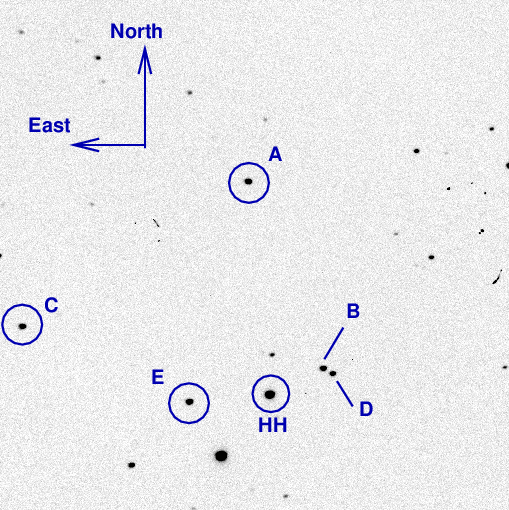
On the night of July 6/7, 2015, Kaitlin Schmidt and I observed the eclipsing contact binary star HH UMa.
The main setup was:
Notes from the night
This object is a nice eclipsing binary star with a continuously varying light curve; a number of papers describing it provide many details, including a period of 0.375494 days = 9.01 hours.
Here's a chart of the field of HH UMa which is at
RA = 11:04:48.1 Dec = +35:36:27 (J2000)
The chart is about 12x12 arcminutes.

Among the labelled stars is
A UCAC4 629-045393 V = 12.721
In order to find HH UMa, the following charts may help. First, a picture about 1.2-by-1.2 degrees on a side from the DSS2 Red plate. The bright star HD 95735, with V = 7.5, is at upper right.
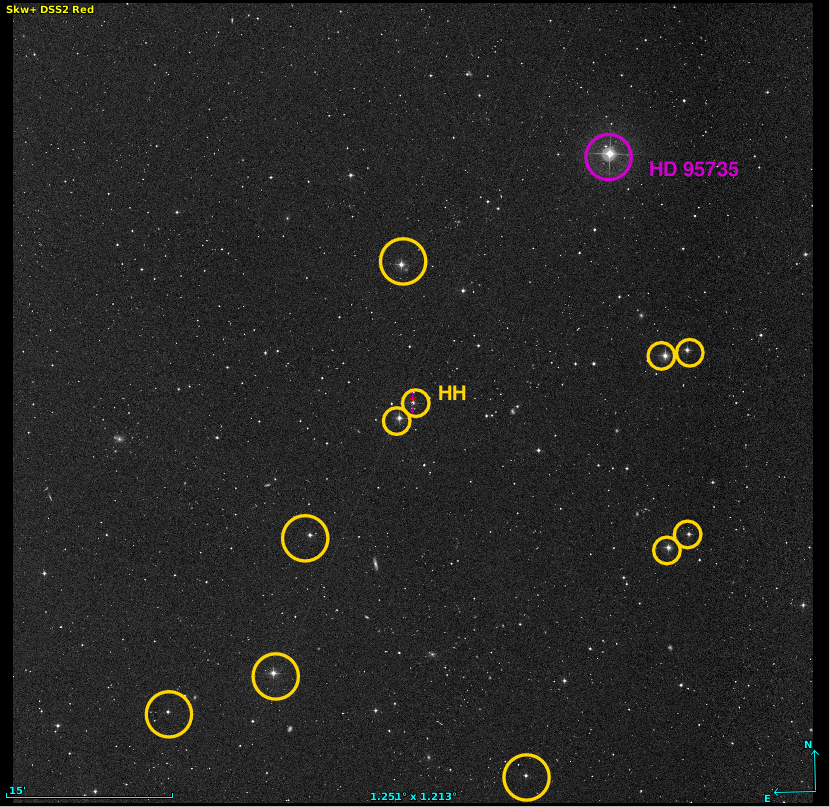
Below is a graph showing the sky brightness as a function of time during the observing run. There are bumps due to clouds, and you can see how bright the sky grew as we followed HH UMa down to the horizon.

Below is a graph showing the FWHM as a function of time during the observing run. Note the many images with higher-than-average FWHM, due to trailing. I did not discard any.

Using aperture photometry with a radius of 5 pixels (radius of 7.1 arcsec), I measured the instrumental magnitudes of a number of reference stars and the target. Following the procedures outlined by Kent Honeycutt's article on inhomogeneous ensemble photometry, I used all stars available in each image to define a reference frame, and measured each star against this frame.
Sigma-vs-mag plot: The brightest star is BD +36 2151, and the second-brightest star is the target. Nearly all the weight in the ensemble solution went to BD +36 2151, so it's hard to determine the uncertainty in measurements of HH UMa; maybe 0.020 mag??
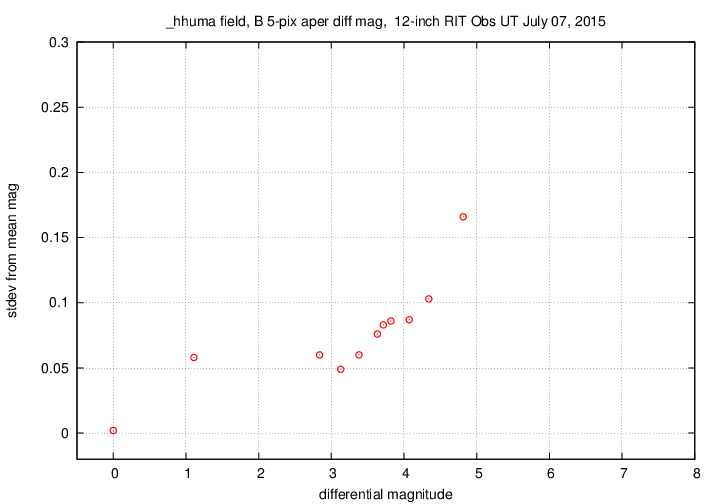
Image adjustment factor: note heavy clouds near the start.
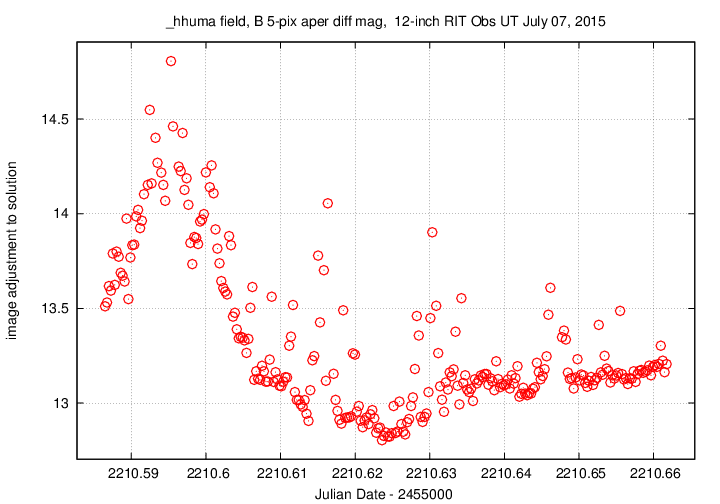
The target, shown in green, steadily rises throughout the run.
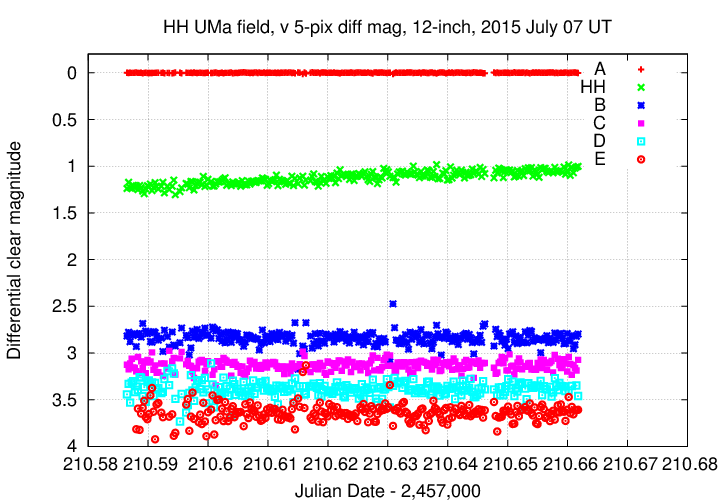
Last modified 6/07/2015 by MWR.